Reasons for Yellow Spots on Lawn: Ways to Fix it
Everyone loves lawns, and if I’m not wrong, most people have them in their house. But who would want to have yellow spots in the garden?
It’s obvious to get worried when you observe yellow spots in the garden. So, the main question now is what to do next? What are the reasons behind it, and what are the ways to fix them?
Believe me, I’ve gone through the pain of dealing with spots in the garden and have found solutions which I’ve outlined in this article. Continue reading to learn how to repair your garden.
Reasons for Yellow Spots on Lawn:
Before starting any treatment you need to. Always found the reason behind the cause so here are some of the most common reasons for yellow spots on the lawn.
Physical Damage:
It can be caused due to getting physical damage to the way you are cutting it. In case if the mower is dull and the grass is cut unevenly then the lawn grass will start turning yellow due to the weakened and physically destroyed. You need to make sure that mower blades are sharps and cut the grass evenly at proper height.

Water:
Over watering the grass may also cause yellow spots on the lawn so in order to water make sure the water does not get stuck in the grass and not to water areas too much. The lawn grass should get the right amount of water.
In order to water the grass properly You need to fix your watering schedule and double-check it according to the type of grass you have planted in the lawn.
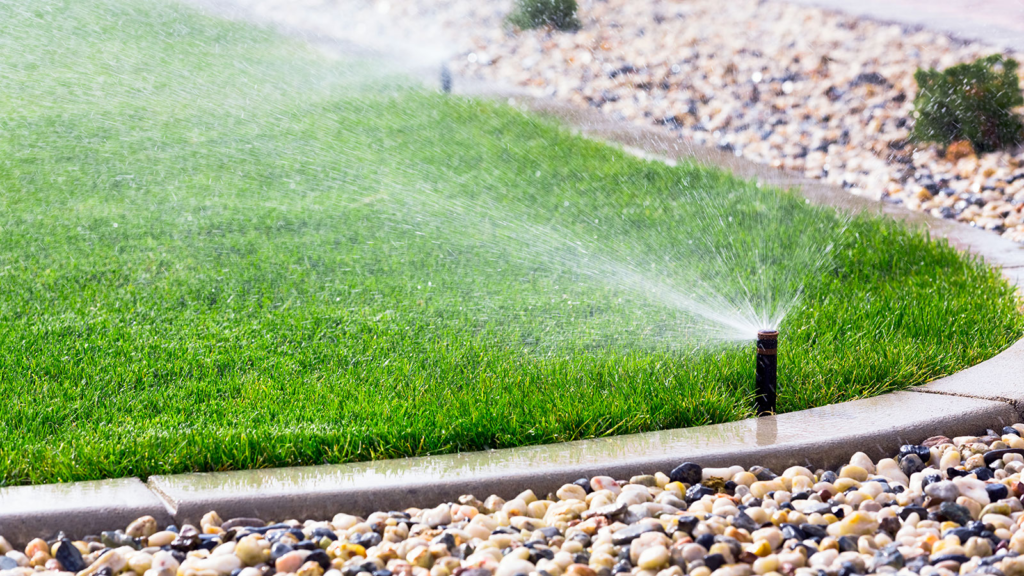
Nutrient Deficiencies:
You can also find the yellow spot on the lawn due to Nutrient deficiency. In case you have not fertilized the lawn grass then it may be difficult for the grass to survive in the changing weather so you need to provide a nutrient to the lawn so that it is able to grow into lush green grass.
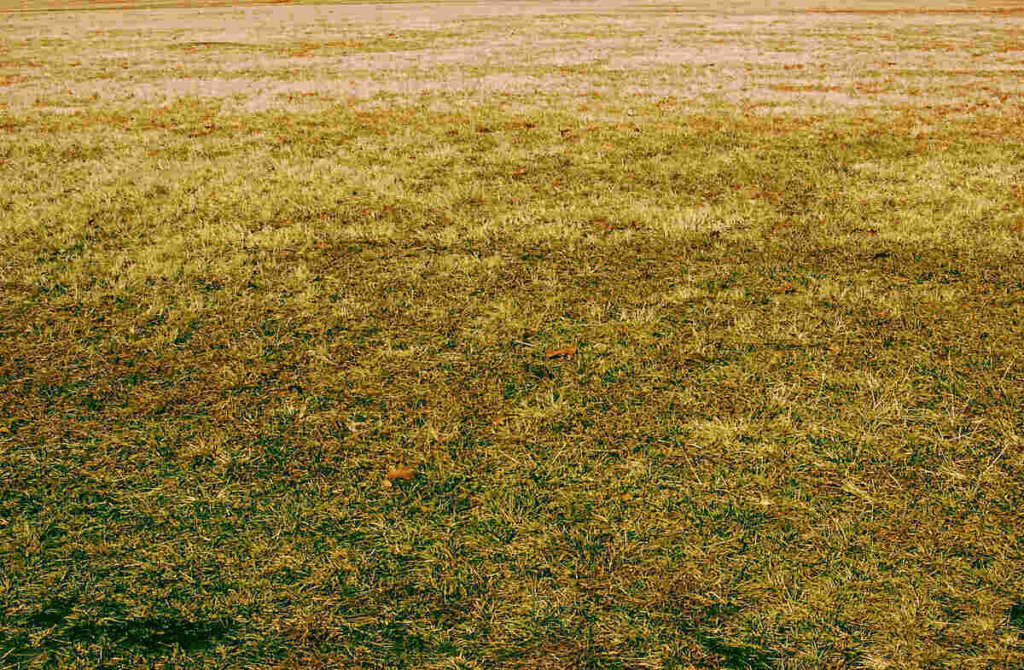
Fungal Diseases/Insect Infestations:
The other reason for getting the yellow spot on the lawn is due to the fungal diseases that target the grass. You can see the yellow spot also due to the insect in infestation or the nest with the net which will change the color of the grass by Absorbing the nutrients from the lawn. So you need to properly know the grass to prevent it from causing fungal diseases.
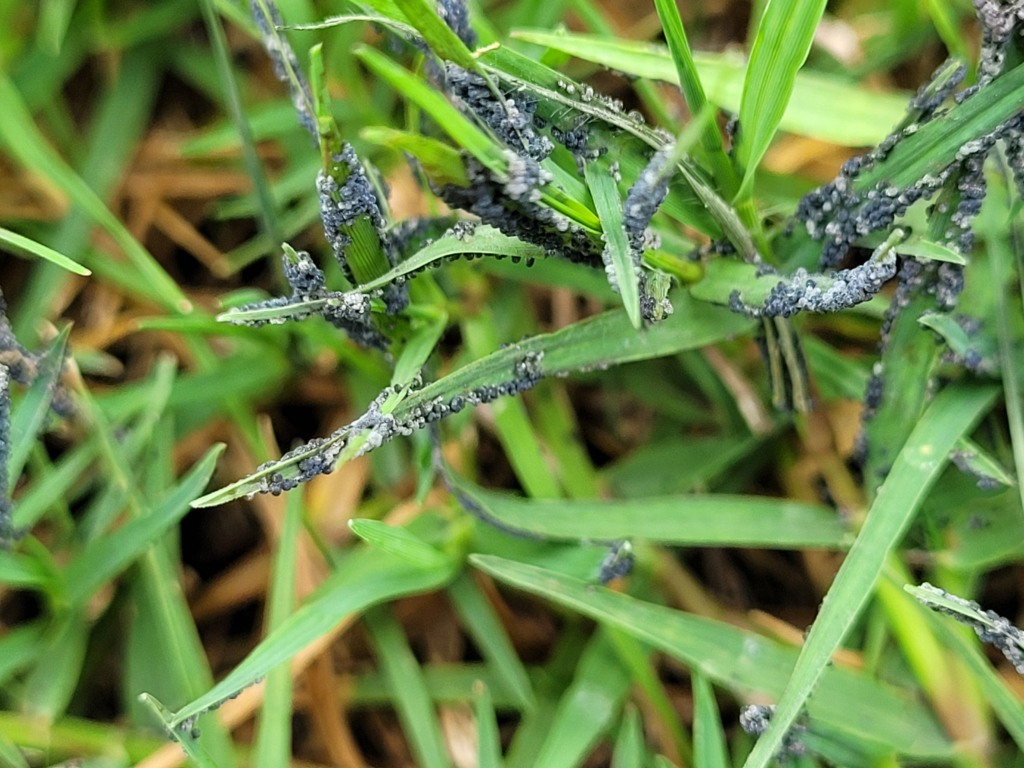
Soil Compaction:
You can also see the yellow spots on the lawn if you have kept any playing equipment or furniture on it and when you move it the yellow patches are found around it which is due to the soil compaction due to which the grass doesn’t get oxygen or water in roots to circulate. To prevent it you need to aerate which will allow the grass to be replenished with oxygen, water, and nutrients.

Too much fertilizer:
In case of over-fertilizing, it can also lead to yellow spots on the lawn as the nitrogen amount more that can burn the grass roots and leave that will lead to the killing of some grass sections and leaving patches of discoloration.
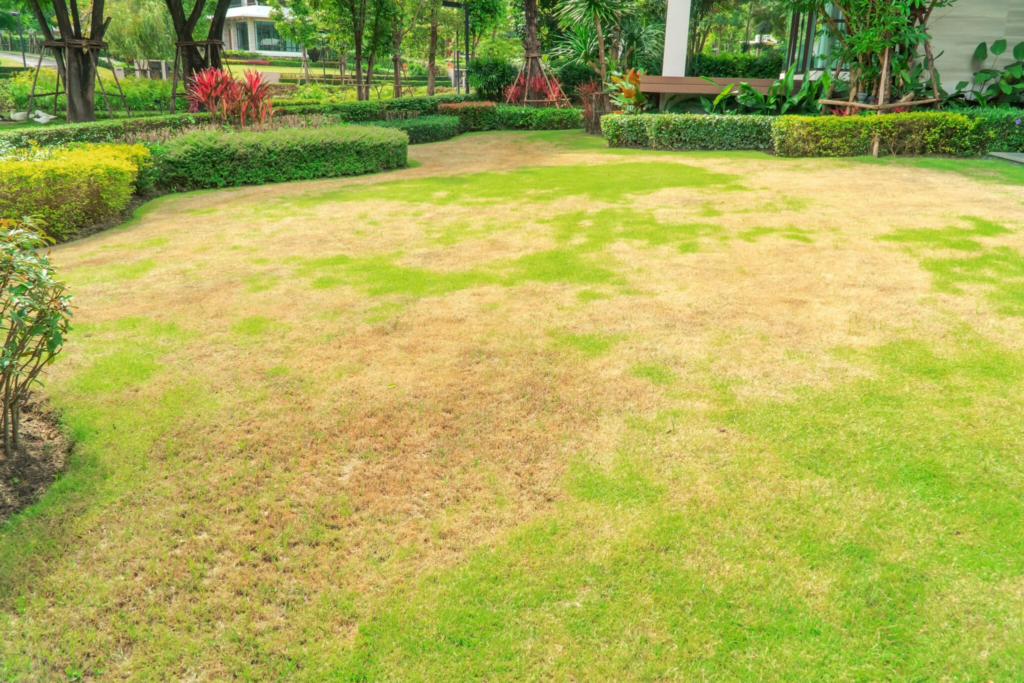
Pet urine:
In the case of having a dog in your house and their urine can cause yellow spots on lawn grass as it will let the nitrogen level rise which will scorch grass patches and cause yellow spots. You need to protect the grass for this as once they start it becomes their habit of peeing in the same spots every day.

Weather:
Weather is also the reason for causing yellow spots on lawn grass as in hot summer stresses out the grass case you have planted the cool season grass and it does enter a state of dormancy during summer that leads to the forming of yellow spots on lawn grass.

Pests:
Pest can also cause yellow spots on lawn grass like chinch bugs and grub worms that damage the grass by eating the nutrients from plant roots. Digging the soil under the yellow spot grass will give you evidence of how the pests eat the nutrients.

Ways to Fix yellow spots on the lawn:
After knowing all the factors that cause yellow spots on lawns you can easily fix the problem and the grass will recover quickly. Below are some ways by which you can prevent the yellow spots on lawn grass and maintain its greenery throughout the season.
The right time to mow:
- Before mowing the grass you need to know when it’s the right time.
- The right time to mow the grass is in mid-morning after drying of the dew.
- The other perfect time is in the late afternoon around 4 pm so that the grass gets the time to recover.
- It will minimize the stress on the plants if mowing is done at the right time.
- The grass will be able to resist fungal diseases.
- Keeping the grass longer will create a shield soil line which will slow down the moisture evaporation rates.
Adjust the lawn mower:
- Don’t cut the grass too short as that will weaken your plants.
- Before cutting the grass, adjust the mow by lifting it up a little bit and make it grow longer such as 2 ½ to 3”.
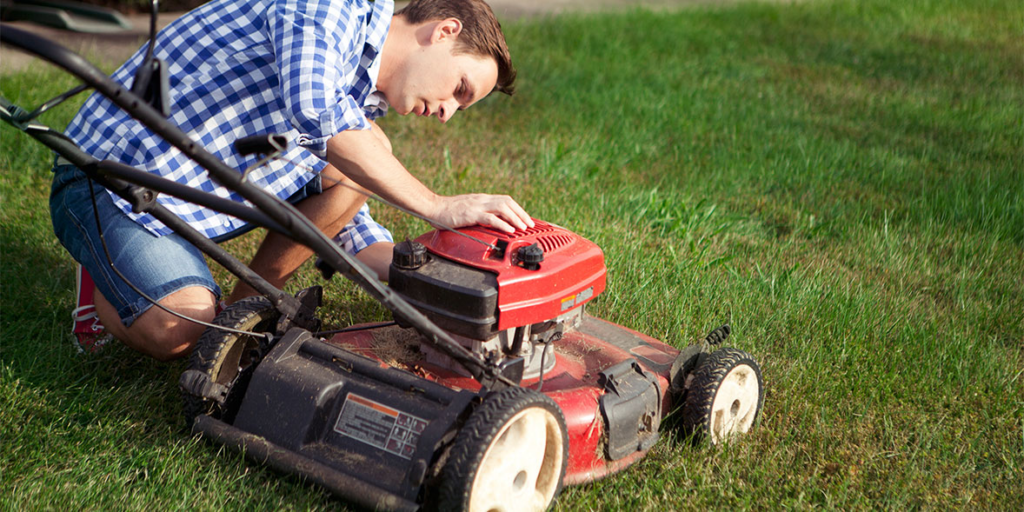
Prune dense overgrowth:
- If the grass does not get the sunlight properly it starts turning yellow or brown over time.
- To avoid yellow spots on lawn grass, shift it from shaded by dense overgrowth so that it receives perfect light.
- Otherwise, you can select the grass seed that you can grow in shadier spots such as Centipede, Zoysia, and St. Augustine grasses.
Improve drainage:
- The yellow spot on the lawn can be caused by the water that spreads fungal disease.
- Planting them in poor draining and soggy soil also impacts the health of the grass.
- You can fix it by filling the grass with fresh soil.
- You can fix the poor draining area by grading or adding a French drain.
- In case you have a soggy area then you need to replace the entire grass with a rain garden
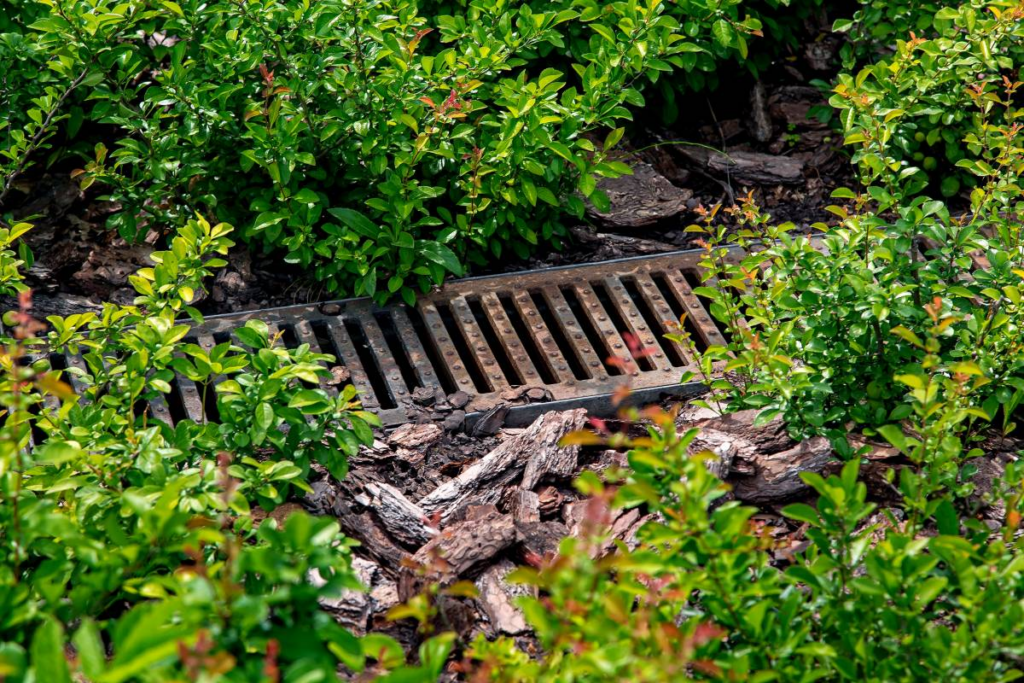
Remember to rake:
- Yellow spots on lawns are caused by blocking the sunlight with dense planting similar to the autumn leaves that if left over the grass for a long time turn the grass yellow.
- So you need to clean up the leaf with the help of a mulching mower so that the grass gets the right amount of light and air.
- Cleaning up the grass also helps in keeping away the fungal disease and reducing the pests.
Fertilize appropriately:
- You need to avoid the over-fertilization that causes the yellow spots on lawn.
- For that, you need to follow the instructions on how to apply and how much.
- Using natural fertilizers can also help in avoiding over-fertilizing.
- You can use soil amendments like aged compost, alfalfa meal, or kelp meal, which are good to provide nutrients to the grass and better to be tolerated by plants and don’t cause burning of the plant.
- You need to water the grass after applying the fertilizer as doing this will reduce the chances of burning and help the grass to absorb the nutrients easily.
Aerate the lawn:
- To increase the airflow you need to aerate and dethatch the plant this will help in reducing fungal diseases.
- Doing this will also help to loosen the compact soil which will improve root development.
- The way of aerating the lawn can be manual by using handy lawn aerator shoes.
- You can also use aerating tools and dethatchers for loosening the soil.
- You can practice this about 1 to 2 times per year or once every 2 to 3 years.
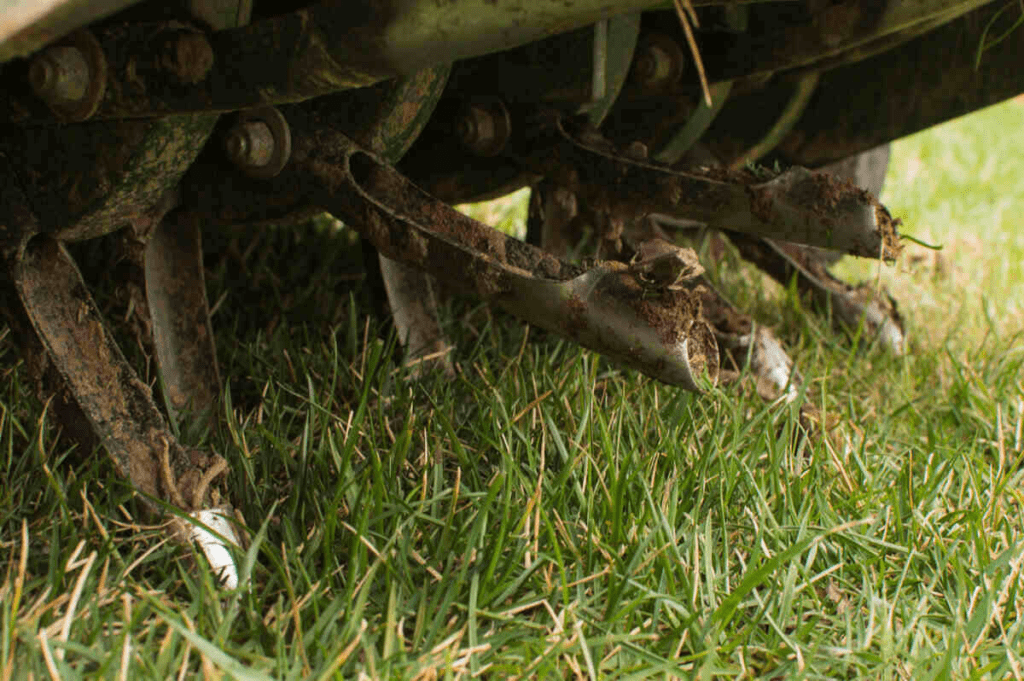
Address pet spots:
- In the case of having a pet in your house and letting them pee in the lawn will cause yellow spots on the lawn as it is high in nitrogen.
- In this situation, you need to rinse that area with water as soon as possible.
- You need to train your pet not to pee in that area of the lawn and you can also cover that area so that the urine doesn’t cause damage to the lawn.
Treat for grubs:
- To protect your lawn from lawn grubs that destroy the roots and cause yellow spots on the lawn you need to aerate the grass which will result in reducing the grub population.
- In case of getting rid for the long term, you need to apply a milky spore in your grass.
- The milky spores are a natural care treatment made up of soil-dwelling bacteria.
- The milky spore does help in keeping away the Japanese beetle grubs and garden grub-free.
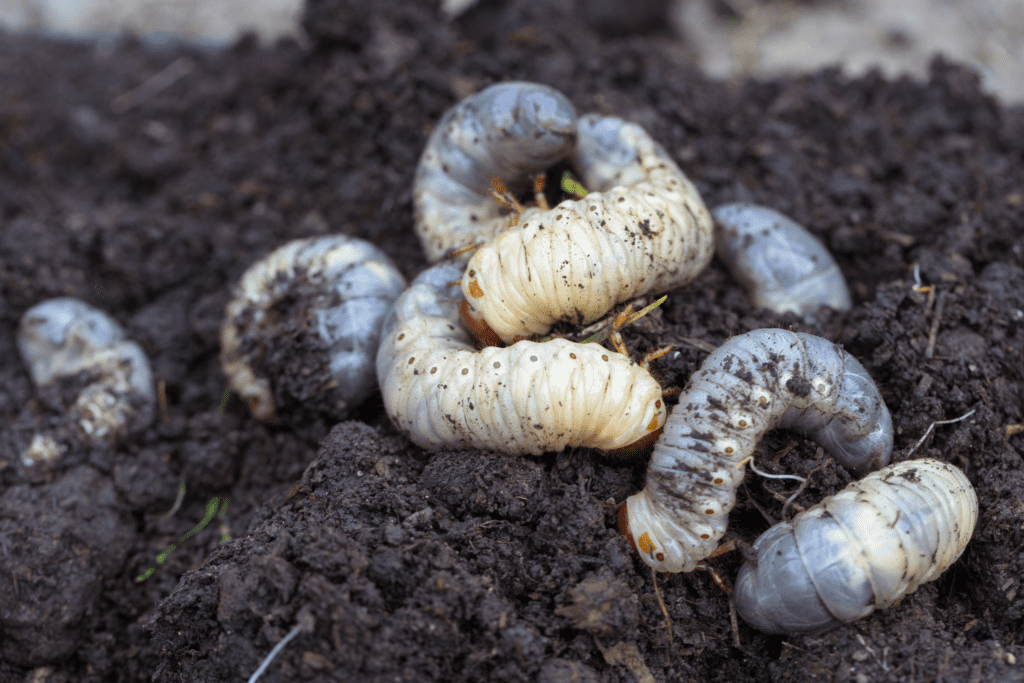
Get a soil test:
- Due to the exposure to the elements, heavy rains, and other factors, the soil becomes depleted of nutrients which turns yellow spots on the lawn.
- It does have poor soil structure that affects the soil fertility and also causes water-logged conditions.
- Doing the soil test will help you find the soil deficiency and if there is a need to improve the soil structure.
- You can check it by yourself or send the soil sample to the local cooperative extension office that helps you to give the data about the soil.
Water right:
- To protect from yellow spots on the lawn you need to water them deeply and frequently.
- You need to make sure that the soil doesn’t dry out, especially during the hot weather.
- Dripping irrigation systems and soaker hoses is an effective way to water the landscape to provide the plant water directly to the plant roots.
- You can also water the grass by hand using a hose but need to aim to water the grass for about 10 minutes.
- If you water the grass at the right time it will help in growing the grass more healthily.
- You need to aim to water grass daily in the early morning before the sun gets too heated.
- Watering them daily will help the leaf to prevent the scorching of the leaf.
Reseed tough spots:
- In case still you are not able to fix them then you need to start over with some fresh grass seed.
- Choose to plant with new seeds in the area where you find the yellow spots or you can also pull out the old grass and plant their fresh seeds.
- For growing the new grass you should choose that falls in their hardiness growing region.
- In a place to deal with a hot summer, you can plant warm-season grasses that are able to tolerate hot weather.
Try out an alternative lawn:
- There are varieties of lawn grass and to plant them you need to maintain them and need to be watered nicely.
- In case you see the grass struggling with a yellow lawn then you need to change the lawn grass.
- You can choose clover lawns with hardy ground covers that need lower watering and the maintenance is less.
- It does need minimal fertilization and is better to resist pests and you don’t need more mowing frequently.
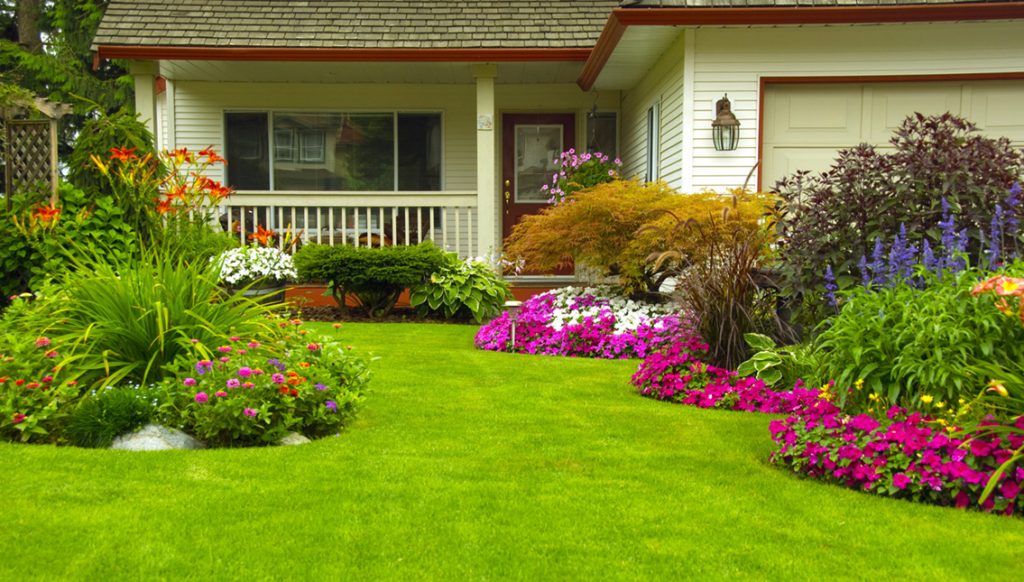
Conclusion:
Hence now you should be clear with the reason behind the yellow spots on lawn and the different ways to fix them. The following prevention will help in maintaining your grass healthy and remaining attractive all over the season.
FAQ’s
Which fertilizer is best to be used for yellow lawns?
Milorganite organic nitrogen fertilizer is considered the best fertilizer for treating yellow grass.


